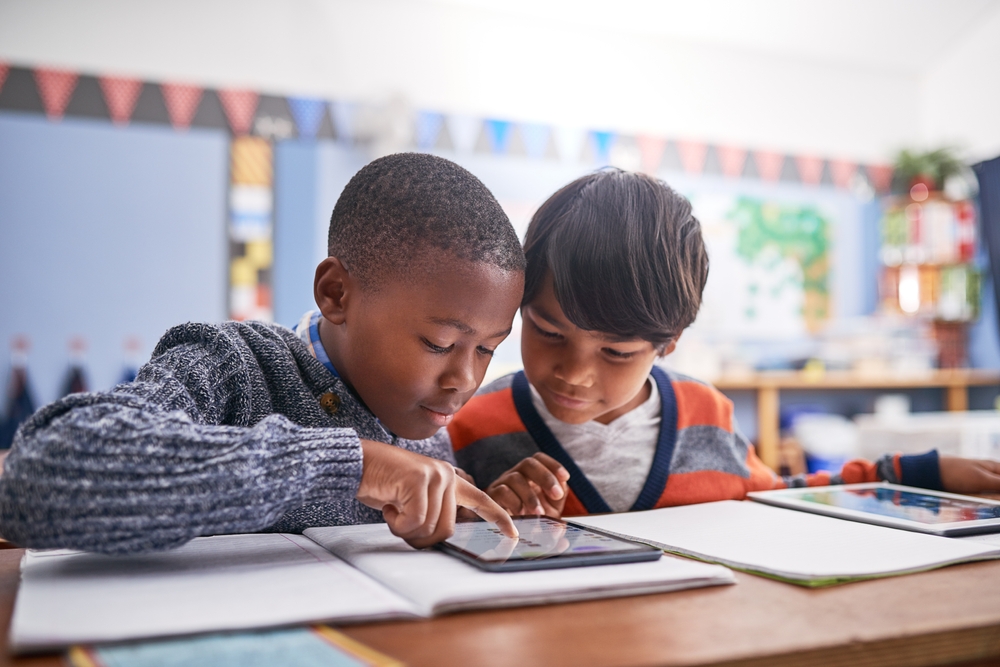Using Multimedia to Engage Different Learning Styles
- February 13, 2025
- By Katie Kennedy
In today’s classrooms, meeting the needs of diverse learners is essential. One of the most effective ways to do this is by incorporating multimedia. By thoughtfully integrating multimedia tools, you can create dynamic, inclusive lessons that address a variety of learning styles. Using Kids Discover Online, these examples can engage different learners and enhance overall student outcomes.

Visual Learners
Visual learners thrive when they can see information presented clearly. Tools like videos, infographics, and diagrams are excellent for illustrating concepts. A video demonstrating a science experiment can make complex ideas easier to understand. Similarly, flowcharts or visual timelines can simplify abstract topics, helping students retain key information more effectively.
Kids Discover Example
Coupled with our Civil Rights Unit, students can explore the Birth of the Civil Rights Movement Infographic to bring history to life. Timelines, found throughout the Kids Discover Online library, help make abstract historical concepts tangible for students who need a visual framework.
Auditory Learners
Auditory learners process information best through listening. Incorporate resources like podcasts, audiobooks, or recordings of key lessons to engage this group. Pair these tools with classroom discussions or Q&A sessions to reinforce the content and deepen comprehension.
Kids Discover Example
Text-to-Speech Read Aloud is available in all Kids Discover Units and Topics to assist your auditory learners. Even while working independently, students can hear and follow along as they read. Text-to-Speech is also a great piece to assist your youngest readers as they explore our Units designed for K-2.
Kinesthetic Learners
Hands-on learners excel when actively participating in the learning process. Utilize interactive multimedia tools like virtual reality (VR) simulations, gamified learning platforms, or interactive whiteboards. These resources encourage students to experiment, explore, and engage physically with the material, which keeps them motivated and attentive.
Kids Discover Example
Kinesthetic learners thrive through movement and hands-on activities. Kids Discover’s Cross-Curricular Lesson Plans, found in our Teacher Guides, offer engaging ways to get students out of their seats—whether they’re acting out historical events, mapping ecosystems, or conducting science experiments. These interactive lessons make learning more dynamic and memorable for active learners.
Reading and Writing Learners
Some students learn best through reading and writing activities. To support these learners, integrate tools like digital articles, interactive e-books, or collaborative platforms like Google Docs. Pairing written content with visual elements, such as annotated diagrams or interactive charts, can enhance understanding and make lessons more engaging.
Kids Discover Example
Reading and writing learners excel when given time to explore texts and express their thoughts through writing. With Kids Discover, students can dive into engaging topics, then extend their learning through journaling. Our Discussion Questions provide a great starting point, helping students reflect, analyze, and put their ideas into words.
Inclusive Learning
Multimedia tools not only cater to individual learning styles but also make lessons more accessible for students with diverse needs. Features like closed captions on videos, text-to-speech software, or visually enriched materials can ensure that students with disabilities or learning differences can fully participate. Inclusive multimedia integration fosters equity and helps every learner succeed.
Kids Discover Example
Inclusive learning ensures every student can engage with content in a way that suits their needs. Kids Discover supports diverse learners with Noah Text for readers with dyslexia, Closed Captions on videos for accessibility, and a Translation feature offering 19 language options—making it easier for all students to explore and understand new concepts.
By incorporating a blend of multimedia resources, educators can address various learning styles while creating an inclusive environment. The thoughtful use of these tools not only boosts engagement but also improves retention, making it easier for students to succeed in today’s dynamic classrooms.
More from the blog

Kids Discover Talks with Television Lighting Designer Christopher Landy About the Rockefeller Center Christmas Tree Lighting
- December 9, 2025

It’s the Most Wonderful Time of the Year… For Community Service Projects!
- December 8, 2025

The Rockefeller Center Christmas Tree Lights the 2025 Holiday Season in New York City
- December 3, 2025